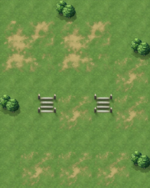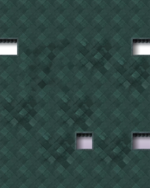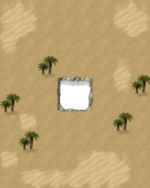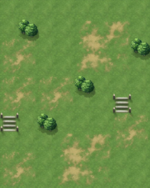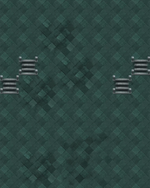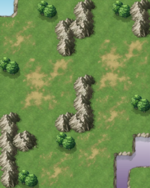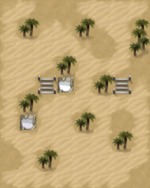| Site News |
|---|
| Warning: This wiki contains spoilers. Read at your own risk! Social media: If you would like, please join our Discord server, and/or follow us on Twitter (X) or Tumblr! |
Resonant Battle
Resonant Battle is a game mode in Fire Emblem Heroes, one of the modes of the game's Coliseum. It is a competitive game mode where players race against thief enemies in an effort to prevent them from escaping the map.
Overview
Resonant Battles take place on large maps along the vein of Rival Domains, Grand Conquests, and Relay Defense, and pit players against six generic colored thieves and six non-generic enemies themed to a certain title or group of titles in the Fire Emblem series. All enemies possess Sacred Seal skills specific to this mode; only the non-generic enemies possess any skills beyond the special Sacred Seal. Like fellow Coliseum mode Allegiance Battle, the map, is constant through the duration of a season; unlike any of the other Coliseum modes, all enemies are fixed throughout the entire season, only varying based on the strength of the enemy team. Unlike the other modes in the Coliseum, players cannot make use of the Pair Up function associated with a specific group of Legendary Heroes; unlike the other modes making use of the larger map type, players do not use brigades but instead their standard four-unit teams.
Seasons in Resonant Battle typically last the standard Heroes season length on the Tuesday-to-Monday cycle. Each season makes use of up to three titles or groups of titles in the Fire Emblem series; two of the three titles are titles that provide bonuses when characters hailing from those titles are deployed, while the third title (which may or may not overlap with one of the first two) is the one that contributes the enemy units. Bonus-title characters are granted stat boosts much in the same vein as other similar modes (+10 HP and +4 to their other stats). For the first two seasons, players were given up to five attempts per season to fight a Resonant Battle, with attempts restocked only at the transition between seasons; this was increased to nine attempts per season with season 3, and the limit on attempts being removed outright with season 17.
Enemy phase behaviors depend on which type of enemy is acting. The generic thieves will attempt to move one space to the north, whereas the non-generic enemies will only attack enemies that wander into their range and will move back toward their starting position if no enemy remains in their range; on player phase, the Sacred Seal equipped by these non-generic enemies, the Guardian Seal, work as an Obstruct skill specifically targeting units wielding range-two weapon skills, and restore HP to whomever defeat them in exchange for slowing down their special skill cooldown count. If a thief reaches the top row of the map, that thief will successfully escape. Successfuly defeating one of the thieves will cause that thief to drop an item, with the item being an assortment of items taken from the arsenal of fellow Coliseum mode Arena Assault; the item dropped by a particular thief is based on the Sacred Seal equipped by that thief. A Resonant Battle ends once all of the thieves either escape or are defeated.
| Thieves' Sacred Seals and corresponding items: | |
|---|---|
| Sacred Seal | Item |
At the end of a Resonant Battle, the player receives a score. The player starts with a base score based on the makeup and strength of their team, and is further modified in the following fashion:
- +10 per each defeated thief (up to +60 due to there being six thieves on the map)
- +10 if the player's team includes one or fewer users of a performing skill (Sing and Dance are named specifically, but as other peforming skills also name those skills specifically as part of their workings, skills such as Play and Whimsical Dream also count in this category)
- +10 for each unit stated to hail from a bonus title or group of titles, as determined by title sorting order; as the titles taking place on Archanea share a sort order, they are considered one game for purposes of the bonus. Should a character be listed as hailing from two titles (i.e. Naga hailing from both New Mystery of the Emblem and Awakening) and both titles are bonus titles for the season, this bonus does not stack. Deploying a Harmonized Hero credited to at least one bonus title nullifies this bonus in favor of a different bonus, as explained below.
- Deploying a Harmonized Hero from a bonus title grants a bonus of (number of eligible Harmonized Heroes, maximum 2 × [number of other characters from bonus titles × 5] × total number of merges on the eligible Harmonized Heroes, maximum 20)
- -20 for each ally defeated during the attempt
Reward tables
At the end of a season, the player's highest score will be compared against the rest of the playerbase within their current interval and pays out rewards based on the percentage of players within that interval; the rewards paid out to a player determine the player's interval for the following season. The overall set of rewards, apart from the Divine Code: Part items and Trait Fruit*, also vary per season and rotate on a six-week wheel.
List of Resonant Battle themes
- Note: All date ranges begin at 7:00 AM UTC on the first listed date and end at 6:59 AM UTC on the second listed date.
Trivia
- The bonus title listing for season 2 listed out the Archanea bonus titles as consisting of Shadow Dragon, Mystery of the Emblem, and New Mystery of the Emblem while excluding Shadow Dragon & the Blade of Light; at the point in time when season 2 was held, no character or variation was credited to Shadow Dragon, whereas characters credited to Shadow Dragon & the Blade of Light (the only one not dual-credited with Mystery of the Emblem at that point in time being Wrys) did count as bonus characters.
- For the cluster's reappearance as season 15 bonus titles (which now also included a special-themed Darros among the non-dual-credit Shadow Dragon & the Blade of Light crew) and even beyond that, in addition to the same visible flaws as in season 2, the game's notifications falsely state that only Mystery of the Emblem was a qualifying title among them, not Shadow Dragon & the Blade of Light or New Mystery of the Emblem (or Shadow Dragon had there been a qualifying character).
- For the first eleven seasons, the game(s) a season's non-generic enemies are drawn from had been a bonus title the following season. This pattern was broken in season 12, where the enemies were instead drawn from a game denoted as a bonus title for the ongoing season instead (of the following season's bonus titles, Radiant Dawn had been the enemy faction back in season 9, while the Tokyo Mirage Sessions contingent as of season 12 consisted of too few characters to fill out an enemy roster).
- The trait resurfaced with season 13 as the non-generic enemies were Heroes originals (a bonus title for the following season 14); however, this season's enemy setup was the first to include character duplicates outside the generic Thieves; notably, there were two each of Ylgr and Helbindi among the enemies. This is likely due to there being fewer Heroes originals in the regular summoning pool than would otherwise be available to fill out an enemy roster (and also raises further questions as to why Tokyo Mirage Sessions was not the enemy faction during season 12).
- Every season's enemy lineup for the first 24 seasons consisted of characters from a title that was a bonus title for either the following season or the ongoing one; season 25 broke this streak, as Three Houses was not a bonus title for either that season or the following one.
Etymology and other languages
| Names, etymology, and in other regions | ||
|---|---|---|
| Language | Name | Definition, etymology, and notes |
| English |
Resonant Battle |
|
